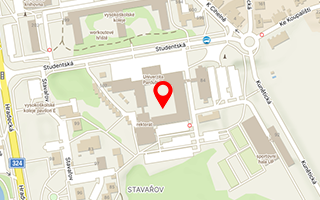- Introduction
Faculty of Electrical Engineering and Informatics
- Introduction
The aim of the project is to develop and commercialize devices for the visual evaluation of weld quality in production. The issue of welds quality testing is a highly topical issue due to the extensive representation of welding operation for creating permanent joints in industrial production.
Currently, operators, or an automated quality-control system tailored to a specific production process, perform visual inspection of weld quality. The proposed solution will be unique in the implementation of special soft computing methods leading that the solution will adapt to the current conditions in production. With this proposal, the sensitivity of the device to changes in conditions (light conditions, position, and orientation of inspected products, ...) will be greatly reduced and applied to different types of production. The device will be usable in different types of welds and will be sufficiently effective for evaluation of weld quality in real-time.
- Introduction
- Introduction
RHINOS aims at increasing the use of EGNSS to support the safety-critical train localization function for train control in emerging regional and global markets. RHINOS adds value to EGNSS by leveraging the results from prior or existing projects, and develops a Railway High Integrity Navigation Overlay System to be used by the rail community. RHINOS pillar is the GNSS infrastructure realized for the aviation application with additional layers that meet the rail requirements in the difficult railway environments.
RHINOS will feature international cooperation with Stanford University, involved in aviation applications since the birth of the GPS, gaining an undeniable knowledge of GNSS performance and high-integrity applications. The ambition is to step beyond the proliferation of GNSS platforms, mainly tailored for regional applications, in favour of a global solution, releasing the potential benefits of the EGNSS to the fast-growing train-signalling world market.
The RHINOS work programme includes the investigation of candidate concepts for provisioning the high integrity needed to protect the detected position of the train, as required by the train control system application which the EGNSS (GALILEO and EGNOS) plus GPS and WAAS constitute.
A further objective of RHINOS is to contribute to the definition of a standard for the Railway High Integrity Navigation Overlay System leveraging the EUUS Cooperation Agreement on ARAIM. The RHINOS dissemination plan includes three specific "workshops" with the rail and satellite stakeholders: at Stanford University (US), in Rome (Western Europe), and in Prague (Eastern Europe).

